If you are a koi pond owner or just contemplating becoming one, you may be quite surprised to look in your pond in late spring or early summer and notice upon closer inspection of the suddenly cloudy water that your fish count may potentially multiply, sometimes significantly, and there will no longer be just adult koi or aquatic plants living in there. Larger fish may now have to share the pond with their offspring, as long as the abundance of baby fish are lucky enough to survive.
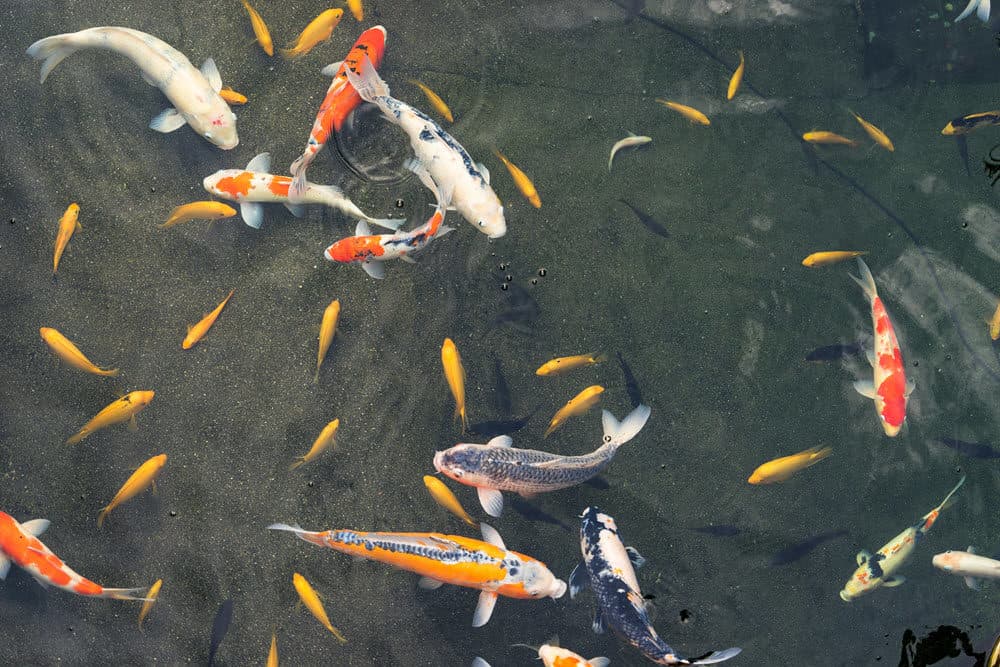
Fish breeding or spawning typically takes place once a year after the mature female fish lay their eggs...thousands and thousands of eggs, tens of thousands actually!! A vast majority of female baby koi develop into adult fish and reach their sexual peak by around 3-4 years old (this is the age when they lay the largest number of eggs), enabling them to reproduce until approximately 7 years of age.
Keeping in mind that their reproductive years don't last very long considering the lifespan for a Japanese koi fish is well into their 50's, the process that occurs during breeding season is quite an interesting one to witness if you are lucky to do so. These beautiful fish reproduce in a completely different manner than mammals and do not actually become pregnant.
Water temperature plays a pivotal role in the time of year that a female koi will begin their spawning time. Optimal water temperatures of 65 to 75 degrees Fahrenheit usually occur sometime between May and June. Water chemistry (ammonia levels), water quality (sufficient oxygen) and adequate filtration are also crucial to maintaining a healthy environment for koi fish to grow, mature into adulthood and inevitably reproduce.
The male and female koi can have an indistinguishable size and equally similar colorful scales which sometimes can make it challenging to tell them apart. Koi fish, both male and female, become mature adults at approximately 3 years old and typically grow to about 10 inches long. However, there are some subtle differences that one can look for in order to figure out who is who.
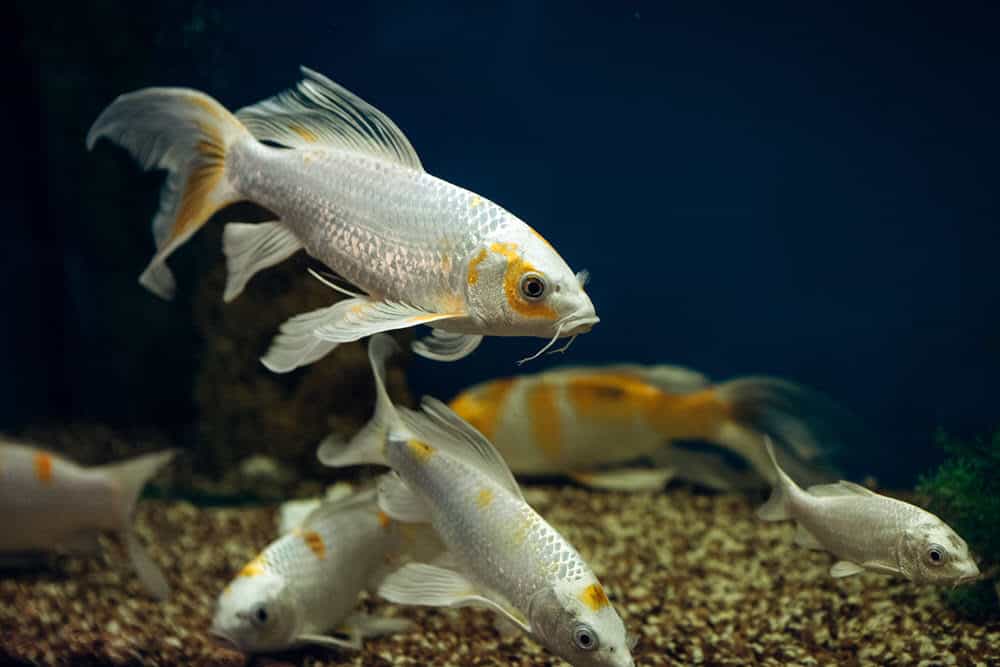
The shape of the fish can be a tell-tale sign of who is a male and who is a female. The male koi fish has a slender shaped body while the female appears rounder, especially during spawning season. The female will also display rounder fins in contrast to the fins of the male which are somewhat pointier.
If you spot something interesting protruding from the head or pectoral fins of your koi fish, this is a completely natural occurrence in the males during breeding season. The protrusions are called "tubercles" and disappear once the spawning process is completed. These growths do not occur in the females.
Lastly, behavior can be a huge tip in determining the difference between your male and female koi fish. While they generally present similar behavior throughout the year, spawning season is a whole different scenario when the males become quite assertive toward the females to "encourage" them to release their eggs.
Female koi fish are typically chased around the edges of the pond by same size or larger size males, beginning early in the morning, who exhibit aggressive behavior in their pursuit to extract the eggs by repeatedly nudging or bumping into the females for up to an entire day, sometimes longer. Not a very romantic way to court your mate, to say the least! Once the eggs are released from the female, the male will immediately spray them with sperm for fertilization to occur. The entire spawning process transpires over the course of 2-3 days.
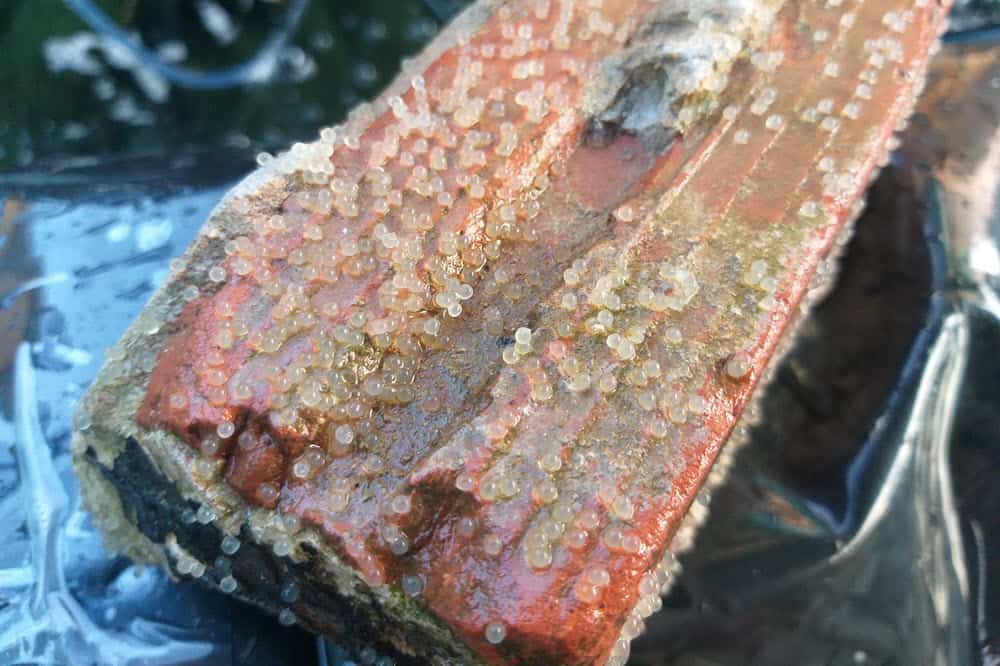
A female koi's body shape will become rounded and bloated looking when it is filled with eggs and for every pound of body weight she has, up to 50,000 eggs can be laid...from just one koi fish! A two pound female can lay up to 100,000 eggs during breeding season. Notably, only a little more than half of those eggs will reach the hatching stage and even less will have a reasonable survival rate in the pond. Professional koi breeders can predict how many eggs will be laid based on the weight of the female fish.
When the time is right and the female koi fish lays her eggs, they will attach to whatever they come in contact with. Subsequently, a successful breeder will have a pond with plenty of plants, such as water hyacinths, to provide the desirable vegetation in more shallow water that the koi fish search for during breeding season.
Adult koi fish, even the so-called parents, will eat baby fish and fish eggs so it is imperative to quickly remove the eggs from the pond water and transfer them to a safer environment, such as a nursery or breeding tank, where they can be nurtured and the water quality better controlled before the hatching phase occurs. A fish net or an artificial spawning mop is recommended for the safe removal of the eggs which can typically start hatching within 3-7 days.
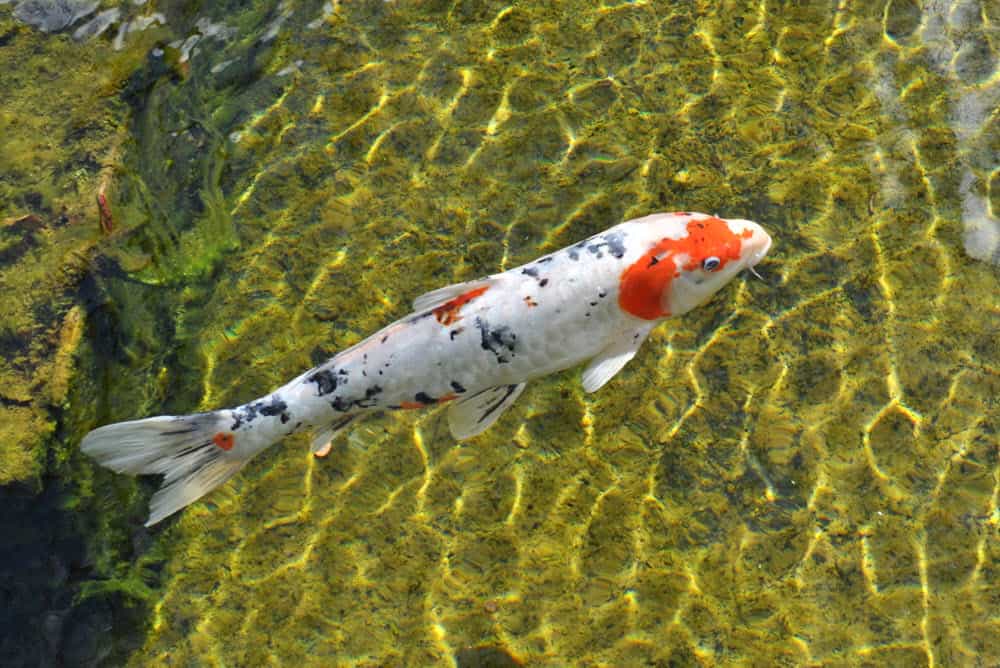
During the spawning process, the most viable eggs will have a diameter of a few millimeters and will exhibit a semitransparent appearance with a brownish hue and tiny seed like dots inside. These are the eggs that are the most likely to produce what is called healthy "fish fry", or newborns, which will in turn hopefully grow into adult koi fish. If you notice a koi fish egg having a white appearance, that is most likely a sign that it is either unfertilized or the embryo has a deformity which would prevent it from becoming viable. Those eggs should be removed immediately to prevent the spread of a fungal infection which can affect the ammonia level in the water, as well as the viability of the remaining eggs.
As mentioned above, the hatching stage takes place a few days after fertilization, most often on the 4th day. The koi fry usually stick close to the area where they were hatched, along the side of the pond or tank most likely, and feed off of the yolk sac for their first few days of life. They can also ingest some nutrition from the aquatic plant life in the tank or pond during that time. Once they become stronger and properly nourished, they tend to explore their surroundings a bit more and develop their swimming skills. It is suggested that a newborn baby koi fish be fed four to five times per day with liquid food initially which will slowly increase to a diet of tiny food particles and then onto bigger solid food, such as fish pellets, as the koi fry grow and mature.
These precious baby koi fish should never be placed into the general adult population of your fish pond until they are large enough to not be eaten, which calculates to approximately 4-6 months old. Experienced fish experts suggest placing the juvenile fish in a plastic bag on the surface of the pond for acclimatization before they are released into the water. It is certainly not a very comforting feeling for these little guys to be face to face with a much larger version of themselves so, as a result, they tend to hide away from them for their own self-preservation until they become adjusted to their new environment.
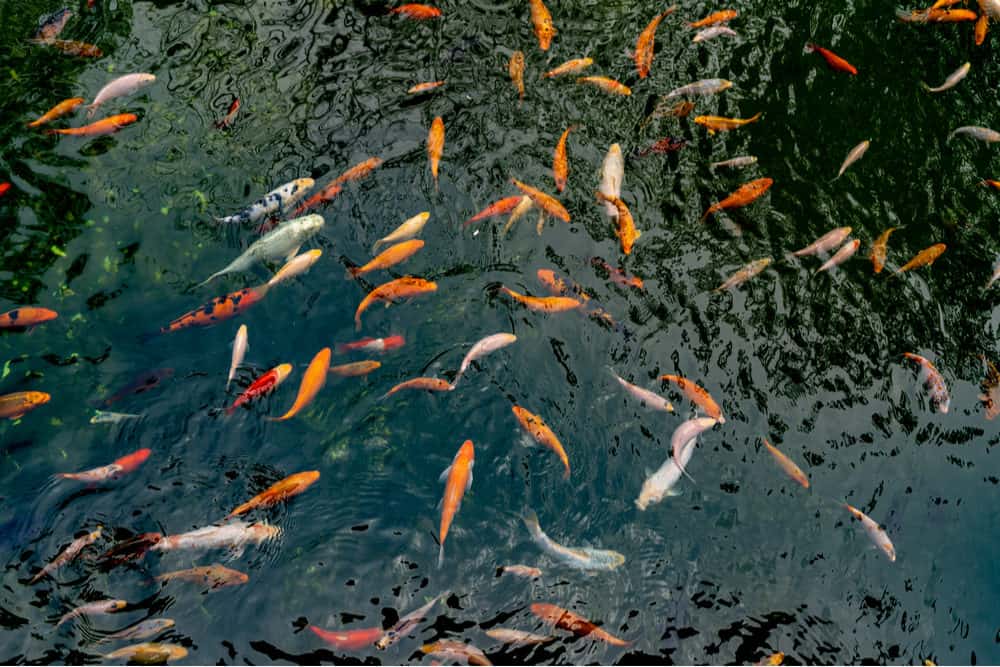
There are many reasons people choose to breed and raise koi fish. Benefits include stress relief from busy and active lives, low maintenance care (believe it or not, considering all those eggs that are laid during spawning season!), as well as luck and good fortune according to Japanese cultural beliefs. Koi fish are also known for their natural beauty and longevity. Therefore, each year as breeding season approaches, the circle of life and the process by which reproduction occurs for these exquisite fish continues to amaze and delight those who observe and care for them. With proper pond water conditions, mating koi fish can produce an abundance of baby koi that can provide entertainment and happiness for many decades.



